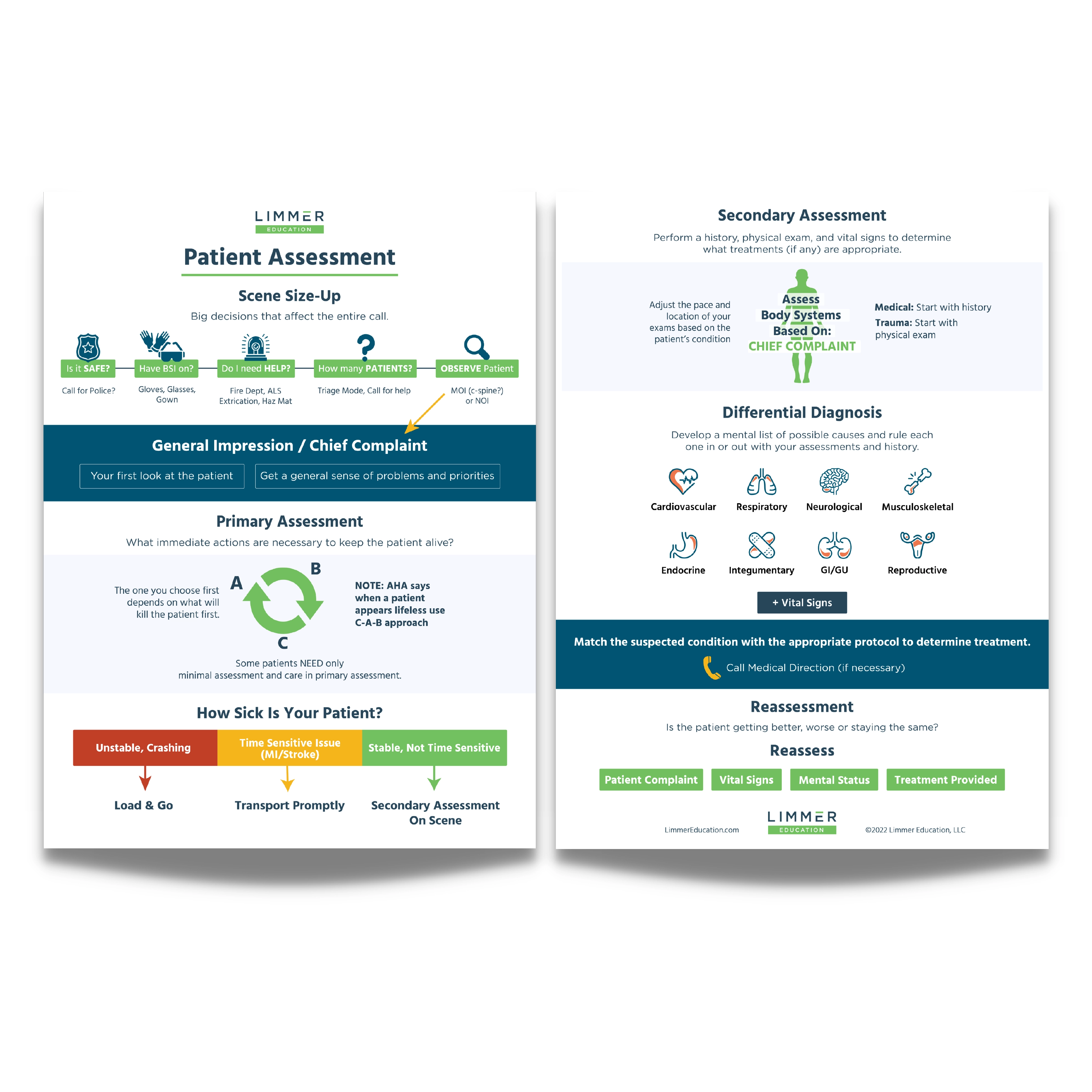Creating Pathways for Learning

by Limmer Education
Our articles are read by an automated voice. We offer the option to listen to our articles as soon as they are published to enhance accessibility. Issues? Please let us know using the contact form.
Let’s Go Backwards
Generations of EMS educators focused on lecture and lab. These two elements, at the time, seemed like the two parts of EMS education that created a successful EMS experience.
Over the years, both EMS and the education community realized there was more. Lecture and lab alone didn’t create a whole educational experience. Theories and buzzwords abounded. We moved toward critical thinking, flipped classrooms, and active learning. Buzzwords gradually became mainstream. We find ourselves today looking at more dynamic classrooms, with educators looking more at the benefits than the risks of these learning methods.
Limmer Education has been there with you throughout this transition. Our Dynamic Learning Exercises have supplemented EMS classrooms, helping educators break the traditional mold and move to a more active learning philosophy.
New Tools for the Active EMS Classroom
Dan Limmer, our co-Founder and Chief Learning Officer, built those Dynamic Learning Exercises (DLE) based on his classroom experiences. Dan tries things in his classes and shares the results with educators. He created two new DLEs to add to Limmer Education’s educator resources. He calls these new DLEs “pathways.”
I found that patient assessment education was more fragmented than the students and I wanted. Students were struggling too much to put it all together.
Dan looked for ways that helped students simulate the assessment process—specifically the thinking involved—while maintaining that fun and active component and not placing a time or resource burden on the educator.
Patient Assessment Pathway #1: Thinking
The result was two “Assessment Pathways.” The first assessment pathway gives students basic dispatch information and tells them that the primary assessment has been successfully completed. The students are asked to, without concern for order, identify the things they need to know to successfully assess and ultimately treat the patient. This free form thinking allows them to brainstorm, make connections, and move into the more structured patient assessment skills practice with a better big-picture vision of what assessment is ultimately about: thinking.

Download the instructions, examples, and (if not using whiteboards) student worksheets for your class
When using exercises like this, look for opportunities to have students work together and get them out of their seats. When Dan did this exercise with his class, he had students work together on whiteboards and write out what they were thinking. This video shows the result:
Patient Assessment Pathway #2: Differential Diagnosis
The second exercise was born from the first pathways exercise and tackles a small, but perhaps the most important, subset of the assessment process: differential diagnostic thinking. While true differential diagnostic thinking casts a wide net (and is covered in the first pathways exercise), it is sometimes helpful (and realistic) to look at two likely causes and differentiate them. That is what our second pathway does.
The nature of differential diagnosis is to look at possibilities and whittle them down to probabilities—the most likely causes. Here the student is given a complaint and two similar conditions that may be causing it. They are asked to compare the presentation of each. The strength of this exercise is that it goes beyond simple assessment techniques by identifying similarities and confounding factors—things that can derail even the best diagnostician.
With this exercise, we provide blank pathways for students to use, a completed sample for guidance, and suggested pathways to assign to your students. You can add your own—or let the students choose.
The added benefit of these dynamic learning exercises is that they can be done by one educator, with students alone or in groups, in the classroom (not the lab), and significantly advance patient assessment performance as students explore and “figure out” the most important component of assessment: thinking.
The educator's role in this exercise—as in any dynamic exercise—is as a facilitator. Facilitation can be challenging when our nature is to teach and get the student to the endpoint quickly. But the learning is in the exploration. Guide (don’t teach) students on the path to figuring things out. Then watch for the “a ha” moments.
Download the instructions, examples, and student worksheets for your class.
Facilitation Questions
Don’t forget these basic and focused facilitation questions:
What do you think?
What will that tell you?
How does that fit in with the overall patient priority?
Which one of those will get you the most information? The most relevant information?
Do the questions and exams you want to perform cover all your differentials?
We recommend using both exercises after your presentation on secondary assessment. You can use these before or after your first assessment labs. We believe they will create a pathway to better assessment for your students.
Here’s to a dynamic semester!
Patient Assessment Posters for Your Classroom
Do your students struggle with effective patient assessment? Our 18 x 24" classroom posters include a Patient Assessment Flow Chart based on one of our most popular blog articles of all time and Guiding Principles of Patient Assessment, based on another popular blog article.
Related articles

Limmer Education






